Everest Base Camp Trekking
Embarking on the Everest Base Camp trek is akin to stepping into a realm where nature’s grandeur and human tenacity converge at the foot of the world’s highest peak. Amidst the crisp mountain air and towering summits, trekkers are bound to unravel a narrative of personal discovery and awe-inspiring landscapes.
But beyond the physical and mental challenges lie tales of camaraderie, culture, and a profound connection with the Himalayan way of life. As each day unfolds on this legendary trail, the allure of Everest Base Camp beckons with promises of unforgettable experiences and untold revelations, making this journey a transformative odyssey worth embarking on.
Key Points

- Trekking offers panoramic views of Himalayan peaks and diverse landscapes.
- Prepare for altitude sickness with slow ascent and proper hydration.
- Immerse in Sherpa culture through interactions, ceremonies, and local cuisine.
- Choose accommodations from basic tea houses to luxury lodges for varied preferences.
Trek Difficulty and Preparation
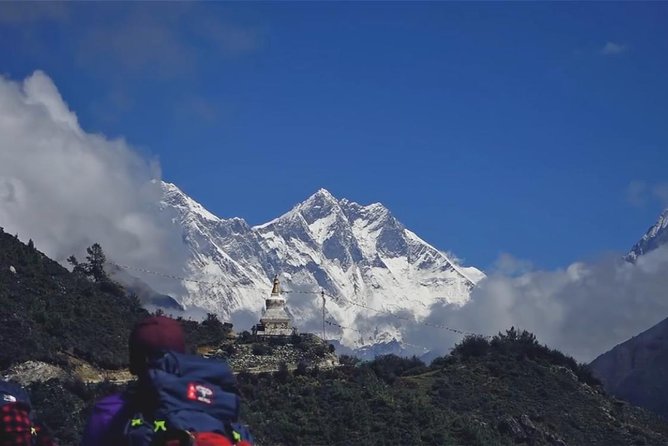
For trekkers embarking on the Everest Base Camp journey, understanding the trek’s difficulty level and preparing adequately are paramount for a successful and safe adventure. Fitness requirements and training play a crucial role in ensuring that trekkers are physically capable of enduring the challenging terrain and high altitudes.
It’s essential to engage in cardiovascular exercises, strength training, and altitude simulation to prepare the body for the demands of the trek. Plus, being aware of the weather conditions and seasons is vital for proper packing and equipment selection.
The Everest region experiences drastic weather changes, with temperatures dropping significantly, especially at higher altitudes. Trekkers must be prepared for snow, wind, and varying temperatures to stay safe and comfortable during their journey.
Accommodation Options and Facilities
Understanding the physical demands of the Everest Base Camp trek, trekkers can now explore the diverse accommodation options and facilities available along the route.
Along the trek, trekkers will encounter a range of accommodation choices, from cozy tea houses to luxurious lodges. Tea houses are basic but comfortable, offering a more authentic experience with communal dining areas and simple sleeping arrangements.
On the other hand, luxury lodges provide more upscale amenities such as private rooms, hot showers, and even Wi-Fi in some cases, allowing trekkers to relax in comfort after a long day of hiking.
Both options have their unique charm and cater to different preferences, ensuring trekkers have a variety of choices to suit their needs during this challenging adventure.
Route Highlights and Itinerary
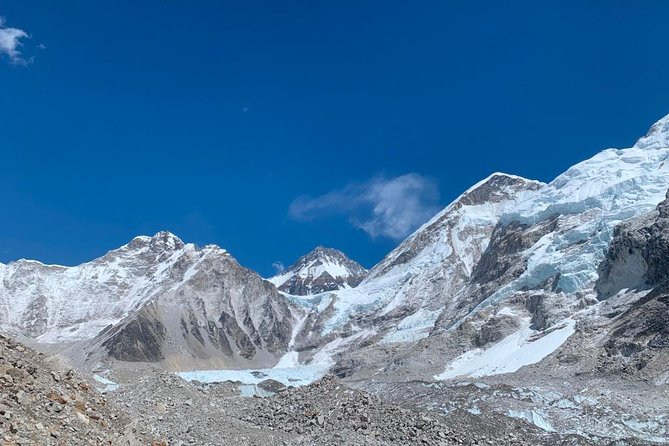
As trekkers embark on the Everest Base Camp journey, they’ll be captivated by the awe-inspiring route highlights and meticulously planned itinerary awaiting them. The journey offers opportunities for capturing breathtaking scenic photography and indulging in unique culinary experiences along the way.
-
Panoramic Views: Trekkers will witness stunning vistas of the Himalayan mountain range, including iconic peaks like Lhotse and Nuptse.
-
Cultural Encounters: Interact with local Sherpa communities and explore their traditions, monasteries, and vibrant prayer flags.
-
Diverse Landscapes: Traverse through varied landscapes, from lush forests to rugged terrain, providing a rich tapestry for photography enthusiasts.
-
Gastronomic Delights: Sample local dishes and beverages at tea houses, experiencing the flavors of the region firsthand.
Altitude Sickness Prevention Tips
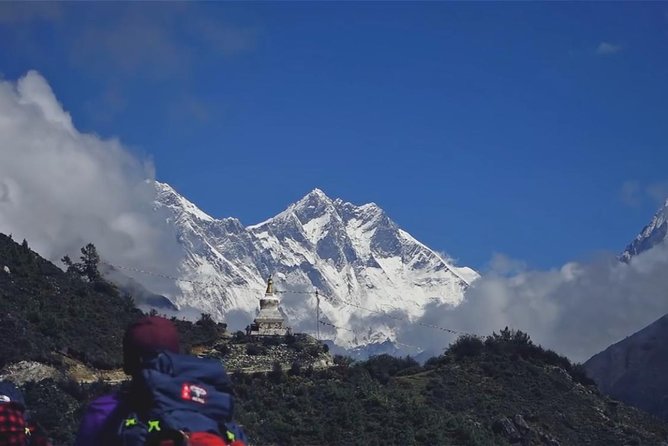
As trekkers journey through the spectacular landscapes and cultural wonders of the Everest Base Camp trek, safeguarding against altitude sickness becomes a paramount consideration. Medical precautions and acclimatization strategies are crucial to mitigate the high altitude challenges and health risks that come with trekking in this region.
It’s advisable to maintain a slow and steady pace, staying properly hydrated, and ensuring adequate rest. Trekkers should listen to their bodies, be aware of symptoms of altitude sickness such as headaches, dizziness, and nausea, and promptly communicate any concerns to their guide.
Prior acclimatization at lower altitudes and incorporating rest days into the itinerary can significantly reduce the risk of altitude-related illnesses, allowing for a safer and more enjoyable trekking experience.
Local Culture and Interaction
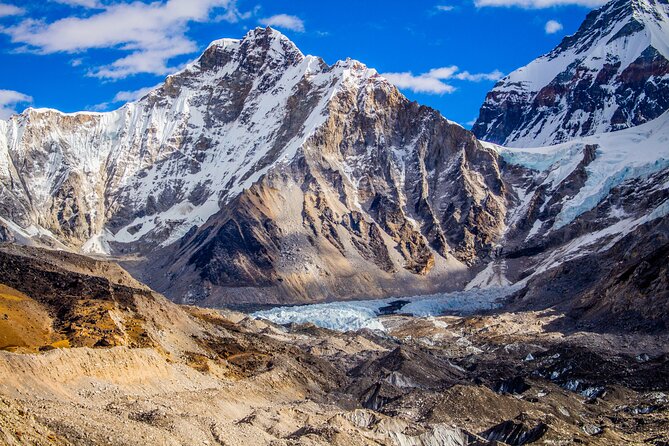
Enjoy the vibrant local culture and foster meaningful interactions during the Everest Base Camp trekking experience. This journey offers exceptional cultural experiences and community engagement opportunities for travelers seeking authentic interactions and a deeper understanding of local customs.
Here are some ways to enrich your experience:
- Participate in traditional Sherpa ceremonies and rituals.
- Visit local monasteries and learn about Tibetan Buddhism.
- Interact with Sherpa guides and porters to understand their way of life.
- Explore local markets and taste traditional Nepalese cuisine.
Safety Measures and Emergency Protocols
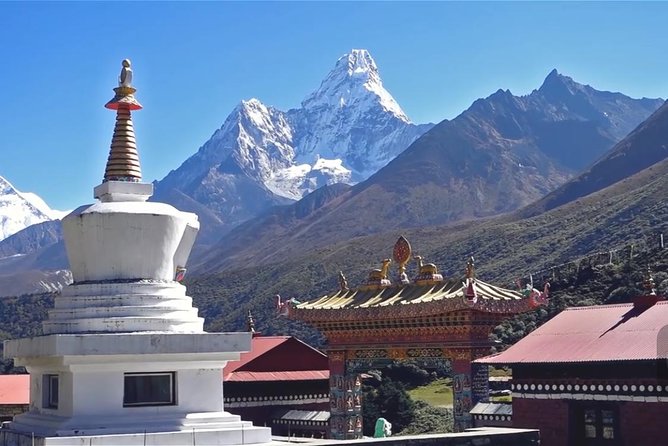
Incorporating comprehensive safety measures and established emergency protocols ensures a secure and well-prepared environment for trekkers embarking on the Everest Base Camp journey. In case of emergencies, prompt emergency response and effective communication protocols are vital. Here is a table highlighting key safety measures and emergency protocols:
| Safety Measures | Emergency Protocols |
|---|---|
| Experienced Guides | Emergency Contact Numbers |
| Adequate Acclimatization Period | Evacuation Procedures |
| Weather Monitoring | Medical Support Availability |
| Emergency Supplies | Communication Devices |
These measures and protocols are designed to enhance the safety and security of trekkers throughout their Everest Base Camp expedition, providing reassurance and support in challenging situations.
Packing List and Gear Recommendations
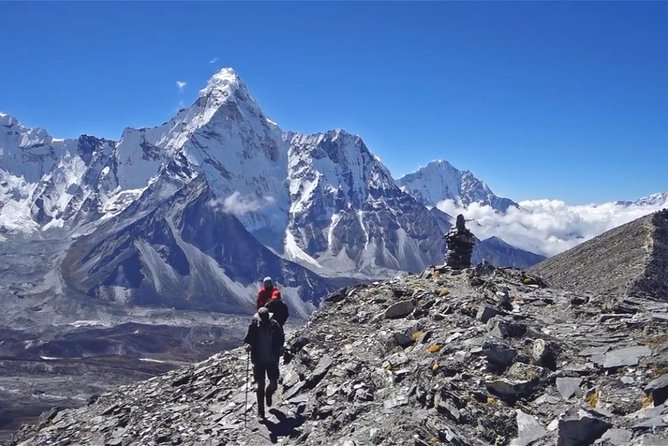
When preparing for the Everest Base Camp trek, trekkers are advised to carefully curate their packing list and gear selections to ensure a safe and enjoyable journey. Here are some key considerations to keep in mind:
-
Gear essentials, rental options: Invest in quality gear such as a sturdy backpack, sleeping bag, trekking poles, and proper hiking boots. If you prefer, some items can be rented locally to lighten your load.
-
Packing hacks, clothing tips: Opt for moisture-wicking clothing layers, including thermal undergarments, fleece jackets, and a waterproof shell. Pack light but smart, considering the unpredictable mountain weather.
-
Hydration and nutrition: Carry a reusable water bottle and energy snacks to stay fueled throughout the trek.
-
First aid kit and personal care: Include essentials like blister plasters, pain relievers, sunscreen, lip balm, and wet wipes for hygiene maintenance on the trail.
Common questions
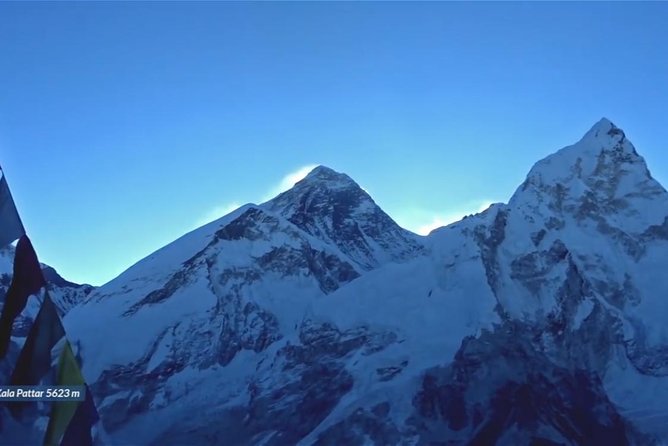
Can I Bring My Own Camping Gear for the Everest Base Camp Trekking or Are There Rental Options Available?
Gear rental options provide convenience and affordability for trekkers. Alternatively, bringing one’s camping gear allows for customization and familiar equipment. Both choices cater to individual preferences, ensuring a comfortable and personalized experience during outdoor adventures.
Are There Any Recommended Travel Insurance Providers That Specialize in High-Altitude Trekking for This Expedition?
When it comes to high-altitude trekking, travelers should prioritize travel insurance for adequate coverage and safety. Comparing different providers ensures the best options tailored to the expedition’s demands. Engage in a thorough comparison for optimal protection.
What Are the Visa Requirements for Traveling to Nepal for the Everest Base Camp Trekking?
When traveling to Nepal, visitors need a valid passport, visa processing, and trekking permits. They must ensure their passport is valid for at least six months. Arrival procedures typically involve clearing customs and immigration at the airport.
Is There a Specific Tipping Etiquette or Guideline for the Local Guides and Porters on the Trek?
When considering tipping customs, it’s important to respect cultural differences. Understanding gratuity expectations and local customs can enhance the travel experience. Being mindful and appreciative of the service provided fosters positive interactions with guides and porters.
Are There Any Unique Cultural Events or Festivals That Coincide With the Trekking Dates That I Should Be Aware Of?
When exploring local customs and cultural experiences, it’s essential to be mindful of any festivals that may coincide with your trekking dates. Enjoy unique celebrations and gain a deeper understanding of the region’s traditions.
Last Words
Embarking on the Everest Base Camp trek is a transformative journey filled with awe-inspiring landscapes, cultural encounters, and personal growth.
From the challenging terrain to the warm hospitality of the Sherpa community, every step taken towards Mount Everest is a step towards self-discovery and adventure.
With proper preparation, respect for the environment, and an open heart, trekkers can experience the magic of the Himalayas and create memories that will last a lifetime.